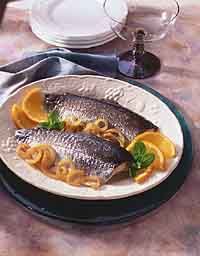Fish is finding its way into the media and onto more tables than ever before. Everywhere you look, people are singing the praises of seafood. It cooks quickly and is very versatile, not to mention delicious and nutritious. Nowadays, nearly everybody recognizes that fish are a good source of protein and rich in healthy oils.
Despite this growing popularity and glowing press reviews, most fish is still eaten out. Many cooks are simply reluctant to try cooking fish at home, and they are unsure about how to buy the right type and handle it properly. The following information on fish will give you the facts, and the confidence, you need to start making fish a more regular part of your home cooking repertoire.
Advertisement
